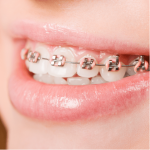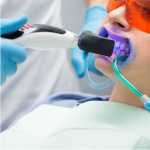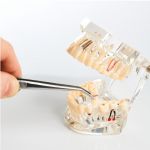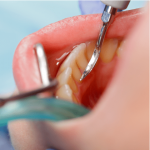
Wisdom Teeth
Wisdom teeth are the third and final set of molars that most people start getting during their late teens or early twenties. In some cases, when these teeth appear they can be seriously misaligned and require removal.
The poor alignment of wisdom teeth can crowd or damage its neighbours and can even affect the jawbone or nerves. They can also be impacted where they are enclosed in the soft tissue or they are partially breaking through or erupting through the gum. This partial eruption gives the opportunity to bacteria to enter the tooth causing infections to happen and with that comes pain and swelling.
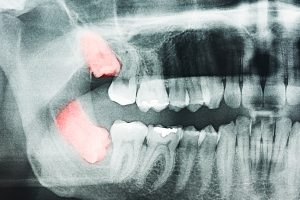
What happens during wisdom teeth removal?
Before your wisdom teeth are pulled, the teeth and the surrounding tissue will be numbed with a local anesthetic. In addition, a sedative might be considered as well if the patient is facing anxiety due to the procedure.
Sedatives can include nitrous oxide (better known as ‘laughing gas’), an oral sedative such as Valium, or an intravenous sedative (administered via an injection into your veins). If nitrous oxide is given, you will be able to drive yourself home. If any of the other medications are selected, you will need someone to drive you both to and from the appointment.
The ease in which your wisdom teeth are extracted depends on its position and stage of development. Your dentist will definitely give you an idea of what to expect during your pre-extraction examination. A wisdom tooth that is fully erupted through the gum can be extracted as easily as any other tooth.
However, a wisdom tooth that is underneath the gums and embedded in the jawbone will require an incision into the gums and then removal of the portion of bone that lies over the tooth. Often in situations like these, the tooth will be extracted in small sections rather than removed in one piece to minimise the amount of bone that needs to be removed to get the tooth out.
What does recovery involve after removal?
After the extraction, the rate of your recovery really depends on the degree of difficulty of the extraction. In general, here’s what you can expect and to do within the first 24 hours of your extraction:
- Bleeding may occur for several hours after the extraction. The dentist will usually provide some gauze for you to hold it over the empty tooth socket. Bite down firmly and apply consistent pressure every 45 minutes or so. Repeat this if a small degree of bleeding continues with new and clean gauze. Avoid sucking actions or drinking hot liquids as these actions will remove the clotted blood from the site of extraction and cause bleeding to start again.

2. Facial swelling in the area where the tooth was extracted typically happens. To reduce the swelling you can take a piece of ice and wrap it in a cloth, then place it on that area of your face for 10 minutes on, followed by 20 minutes off. Repeat as you feel necessary.
- If there is minor pain, get your dentist to prescribe suitable pain medication and if you need stronger ones, make it a point to let the dentist know immediately.
4. Restrict your diet to liquids and try to only eat soft foods for the next few days.

5. Don’t stop brushing your teeth but do avoid the teeth directly neighbouring the extraction site for the first 24 hours. Refrain from using commercial mouth rinses so that you won’t irritate the area.

